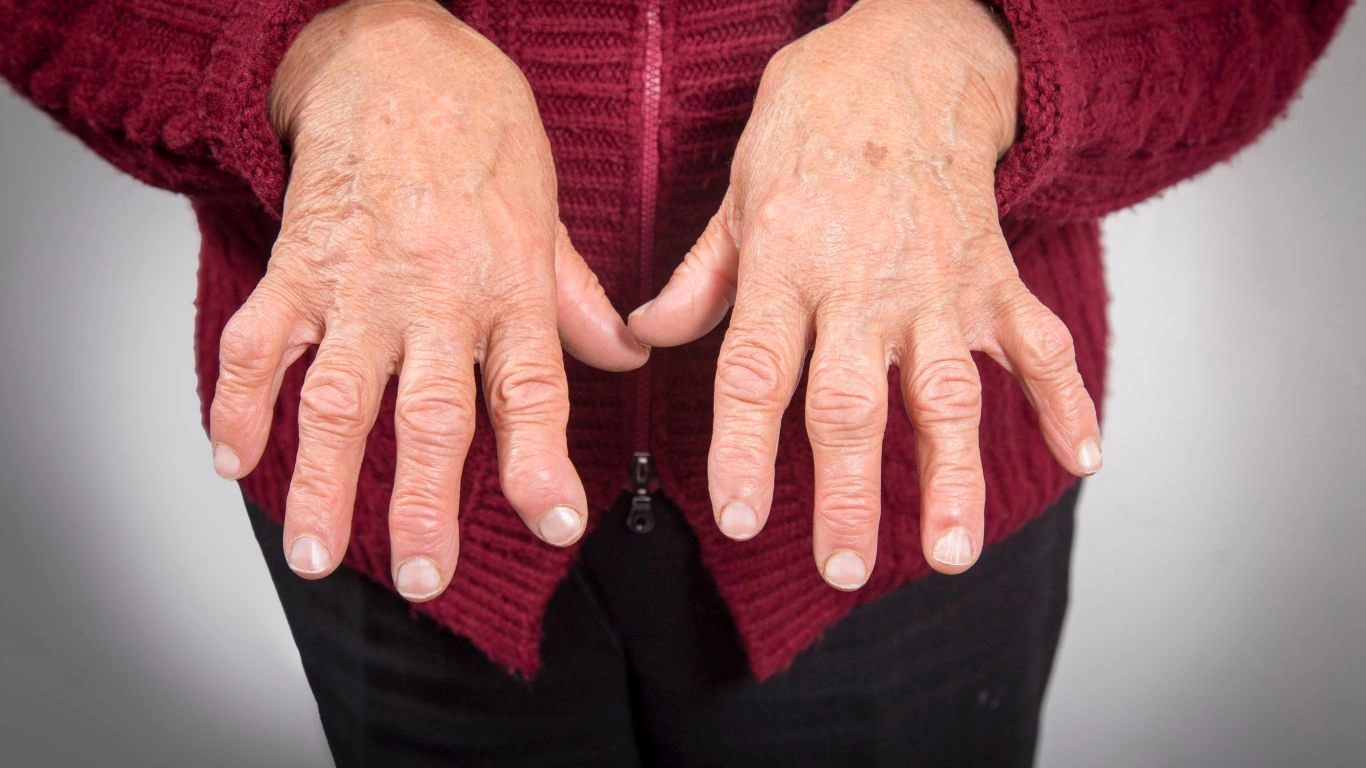Discover How a Gluten-Free Diet Reduces Inflammation in Rheumatoid Arthritis
As a Rheumatology Nurse Practitioner, I’ve had the opportunity to work closely with patients who struggle with rheumatoid arthritis (RA). It’s a complex, often debilitating condition that causes inflammation in the joints and can lead to severe pain, stiffness, and long-term damage. One thing I’ve noticed over the years is how much lifestyle factors, particularly diet, can influence the severity of symptoms. A key area that frequently comes up in discussions with patients is the effect of gluten on inflammation, especially when it comes to rheumatoid arthritis. In this article, we’ll dive into what the research says, along with some practical advice I often share with my patients who are looking for ways to manage their symptoms through diet.
The Connection Between Gluten and Inflammation in Rheumatoid Arthritis

Gluten is a protein found in wheat, barley, and rye, and it’s become somewhat of a villain in the world of health and wellness in recent years. For those with celiac disease, gluten is a serious issue, but what about people with other conditions, like rheumatoid arthritis (RA)? Can gluten actually worsen the symptoms of RA, or is it just a passing trend in the diet world? The short answer: there’s growing evidence to suggest that gluten can indeed contribute to inflammation in some people with RA, but the relationship is more complex than it might seem.
How Gluten Affects Inflammation in Rheumatoid Arthritis
Rheumatoid arthritis is an autoimmune disorder, meaning the immune system mistakenly attacks the body’s own tissues—in this case, the joints. The immune system’s overactive response leads to chronic inflammation, pain, and eventual joint damage. In some individuals with RA, gluten may trigger or exacerbate this immune response, leading to increased inflammation. It’s important to note that not everyone with RA will be sensitive to gluten, but for those who are, cutting gluten out of their diet can have a noticeable impact.
From my experience, some patients find that eliminating gluten helps reduce their RA flare-ups, while others don’t notice a significant difference. This variation is likely because each person’s immune system is unique, and RA can manifest differently from one individual to the next. That said, many of my patients report feeling less fatigued and experiencing less joint pain after going gluten-free. Could it be a placebo effect? Maybe in some cases. But for many others, the improvement is real. So, let’s take a look at why that might be.
The Science Behind Gluten and Autoimmunity
When gluten is consumed by someone with a gluten sensitivity or intolerance, it can trigger an inflammatory response in the body. For those with RA, this can mean the immune system is more likely to react and attack the joints. The body’s immune system mistakenly perceives gluten as a harmful invader, setting off an immune cascade that leads to increased inflammation in various parts of the body, including the joints. This inflammation can worsen symptoms like pain, swelling, and stiffness in the affected areas.
Several studies have explored the link between gluten and autoimmune diseases, including RA. One study found that people with RA who followed a gluten-free diet for a period of time experienced significant improvements in joint pain and overall inflammation. Another study suggested that gluten might contribute to a leaky gut, which in turn exacerbates systemic inflammation in autoimmune conditions like RA. While more research is needed to fully understand the mechanism, the connection between gluten and inflammation in autoimmune diseases like RA is becoming more evident.
Symptoms of Gluten Sensitivity in People with Rheumatoid Arthritis

One of the biggest challenges with gluten sensitivity is that the symptoms can often be mistaken for something else, especially in individuals already living with RA. The common symptoms of gluten sensitivity in people with RA include:
- Increased joint pain and swelling
- Increased fatigue
- Digestive issues, such as bloating, diarrhea, or constipation
- Headaches or migraines
- Brain fog or difficulty concentrating
If any of these symptoms sound familiar, it might be worth considering whether gluten could be contributing to your inflammation. However, as with any dietary change, it’s always a good idea to work with a healthcare provider before making any drastic shifts. I often recommend keeping a food journal to track what you eat and how you feel. That way, you can pinpoint any correlations between gluten consumption and symptom flare-ups.
Can a Gluten-Free Diet Help Manage Rheumatoid Arthritis Symptoms?

As I mentioned earlier, many of my patients have found relief by eliminating gluten from their diets. However, it’s not a one-size-fits-all solution. A gluten-free diet can be beneficial for some, but it’s not guaranteed to work for everyone with RA. Some people might experience significant improvements, while others might see only modest benefits or no change at all. It’s important to approach any diet change with patience and an open mind.
If you’re considering trying a gluten-free diet to manage your RA symptoms, here are some things to keep in mind:
- Consult your doctor: Before making any major dietary changes, it’s always a good idea to talk with your healthcare provider. They can help guide you and ensure you’re getting the nutrients your body needs.
- Focus on whole foods: A gluten-free diet can be just as healthy (or unhealthy) as any other. The key is to focus on whole, unprocessed foods like vegetables, fruits, lean proteins, and gluten-free whole grains like quinoa and brown rice.
- Read labels carefully: Many packaged foods contain hidden sources of gluten, so it’s essential to read labels carefully when buying processed foods.
- Be mindful of nutrient deficiencies: When eliminating gluten, it’s important to ensure you’re getting enough of key nutrients like fiber, iron, and B vitamins, which are often found in gluten-containing grains.
Ultimately, a gluten-free diet can be a helpful tool in managing rheumatoid arthritis for some people. But as with any lifestyle change, it’s important to approach it thoughtfully and be aware of how your body responds.
Exploring the Benefits of a Gluten-Free Diet for Rheumatoid Arthritis

As we continue to explore the relationship between gluten and rheumatoid arthritis, it’s essential to consider the potential benefits that a gluten-free diet can offer. From my own experience, I’ve witnessed firsthand how some patients see real improvements in their symptoms after eliminating gluten from their daily meals. These benefits are not just about reducing joint pain, but they can also include a general feeling of well-being. Let’s dive into some of the key advantages that a gluten-free diet might provide for those managing rheumatoid arthritis.
Reduction in Joint Pain and Swelling
One of the most immediate changes many people notice when they go gluten-free is a reduction in joint pain and swelling. The reason behind this could be linked to the inflammatory response triggered by gluten in susceptible individuals. By cutting gluten from the diet, the body might be able to lower its overall inflammatory levels, leading to less discomfort and more mobility. I’ve seen patients express how their joints feel less stiff, especially in the mornings, after just a few weeks of eliminating gluten. For someone dealing with RA, this kind of relief can be a game-changer.
Improved Gut Health and Immune Function
Another significant benefit of a gluten-free diet is the improvement in gut health, especially for those who experience a leaky gut syndrome, which is commonly found in autoimmune diseases like rheumatoid arthritis. The theory is that gluten can contribute to gut permeability, allowing harmful substances to enter the bloodstream and trigger an inflammatory response throughout the body. By removing gluten, the gut lining may become less permeable, leading to reduced systemic inflammation. Over time, this could improve not only joint health but overall immune function as well.
From personal experience working with patients, many have shared that they feel “lighter” or less bloated after going gluten-free, which often correlates with improved digestion and less inflammation. It’s a subtle but impactful change that can make managing RA symptoms easier.
Better Energy Levels and Less Fatigue
Fatigue is a common complaint among those with rheumatoid arthritis. It’s no surprise, really—chronic inflammation takes a toll on the body and can leave you feeling drained. When people with RA go gluten-free, some report a noticeable increase in energy. This might be due to the reduced inflammation, better gut health, and overall improvements in the immune system. I’ve had patients tell me that they feel more energized during the day, which makes a big difference in their ability to carry out daily activities and engage in more movement, even with RA.
Of course, fatigue can have many causes, and cutting out gluten may not be the solution for everyone. However, for those who are sensitive to gluten, this dietary change can lead to a significant boost in vitality and help fight off that constant feeling of exhaustion that often accompanies RA.
Gluten-Free Diet: What to Expect and How to Start

Making the switch to a gluten-free diet can feel overwhelming at first. Many of my patients have shared that they’re unsure where to start, what foods to avoid, and how to ensure they’re still getting the nutrition they need. But trust me, with a little planning and some adjustments, going gluten-free can be a manageable and even enjoyable experience. Here are some helpful tips to get you started.
Know What Foods to Avoid
The first step in transitioning to a gluten-free diet is knowing what foods to avoid. Gluten is found in most foods made with wheat, barley, and rye, so you’ll want to avoid the following:
- Bread, pasta, and baked goods made with wheat flour
- Beer, which is made from barley
- Processed foods containing wheat or gluten as a filler or thickener
- Certain sauces and dressings, which may contain gluten as a hidden ingredient
It’s crucial to read labels carefully, as gluten can hide in unexpected places. For example, soy sauce is often made with wheat, so it’s important to find a gluten-free alternative. Over time, it becomes second nature to look for gluten-free options at the store, and many grocery stores now have entire aisles dedicated to gluten-free products.
Focus on Naturally Gluten-Free Foods
The good news is that there’s a wide variety of naturally gluten-free foods that are also nutrient-dense and delicious. These include:
- Fruits and vegetables
- Lean meats, poultry, and fish
- Eggs
- Legumes like beans and lentils
- Rice, quinoa, and other gluten-free grains
- Nuts and seeds
Incorporating these foods into your diet will help ensure you’re still getting plenty of fiber, protein, and healthy fats, even without gluten. Plus, they’re great for reducing inflammation and supporting overall health.
Consider Working with a Nutritionist
If you’re unsure about how to balance your meals or worried about nutrient deficiencies, working with a nutritionist can be incredibly helpful. A nutritionist can help you design a meal plan that’s gluten-free, balanced, and rich in the vitamins and minerals necessary for overall health. I often recommend that my patients seek out a nutritionist when starting a gluten-free diet to make sure they’re covering all their bases. They can also help ensure that your meals are enjoyable, not restrictive.
The Role of Supplements in a Gluten-Free Diet for RA

When following a gluten-free diet, it’s essential to ensure that you’re still getting the necessary nutrients, as gluten-containing grains are rich in certain vitamins and minerals. Some common deficiencies that can arise in a gluten-free diet include:
- Fiber
- Iron
- Vitamin B12
- Calcium and Vitamin D
If you’re concerned about these potential deficiencies, consider discussing supplementation with your doctor. For example, you might need to supplement with a multivitamin or specific nutrients like iron, vitamin D, or calcium, especially if your diet is lacking in these areas. Many of my patients find that taking the right supplements can help fill in the gaps and ensure they’re staying healthy while following a gluten-free lifestyle.
In summary, adopting a gluten-free diet may not be a cure-all for rheumatoid arthritis, but it has the potential to reduce inflammation, improve joint health, and increase energy levels for many individuals. As always, it’s essential to approach any dietary change with an open mind, patience, and the support of your healthcare team. Whether gluten-free works for you or not, it’s worth exploring, especially if it could help manage your RA symptoms.
Challenges of a Gluten-Free Diet for Rheumatoid Arthritis

While many individuals with rheumatoid arthritis (RA) may find benefits from adopting a gluten-free diet, it’s not always smooth sailing. Like any major dietary change, there are challenges that can arise, and it’s important to be realistic about what to expect. I’ve had several patients express frustration when they don’t experience instant relief or when they struggle to maintain a gluten-free lifestyle. If you’re considering a gluten-free diet to manage your RA symptoms, it’s crucial to acknowledge the potential obstacles and have strategies in place to tackle them.
Social and Lifestyle Challenges
One of the biggest challenges people face when going gluten-free is navigating social situations. Whether it’s a family dinner, a work gathering, or a trip to a restaurant, being in a setting where gluten-containing foods are abundant can be tough. I’ve had patients tell me how difficult it is to refuse gluten-laden meals at social events, especially when they feel like they’re missing out on the fun.
For those with RA who are looking to avoid gluten, it can sometimes feel isolating or overwhelming when others don’t understand or respect their dietary choices. It’s important to be prepared in these situations. Bring your own gluten-free dish to gatherings, speak with restaurant staff about gluten-free options, or simply explain your health needs to those around you. Most people will understand, and you might even inspire others to make healthier choices themselves!
Difficulty with Meal Planning
Another common issue is meal planning and preparation. Many people are used to cooking with gluten, whether it’s bread, pasta, or other grains. For those just starting on a gluten-free journey, figuring out how to create balanced and satisfying meals without gluten can be overwhelming. I recommend taking things one step at a time. Start by replacing the obvious sources of gluten with alternatives like quinoa, rice, or gluten-free pasta.
Another tip is to get creative with your meals! I’ve encouraged my patients to try new recipes or to experiment with naturally gluten-free dishes from different cultures, such as Mexican or Mediterranean food. Over time, you’ll find that cooking gluten-free becomes just as easy and enjoyable as any other style of cooking. Consider working with a nutritionist to help you develop a plan that suits your needs while ensuring you’re still getting all the nutrients your body requires.
Potential Nutrient Deficiencies
As with any restrictive diet, there’s a risk of nutrient deficiencies when following a gluten-free plan. Gluten-rich foods are often fortified with vitamins and minerals like iron, folic acid, and B vitamins. When eliminating these foods, it’s important to be mindful of your nutrient intake. I always recommend that my patients pay extra attention to their diet and consider supplements, especially for key nutrients like vitamin D, calcium, and fiber, which can be harder to get without gluten-containing grains.
For instance, vitamin B12 is found in many gluten-containing products, and without careful planning, you may not be getting enough. While some gluten-free foods are fortified with B12, it’s worth discussing supplementation with your healthcare provider to make sure you’re meeting your needs. The goal is to ensure you’re not only avoiding gluten but also maintaining a well-balanced, nutrient-dense diet.
How to Know if a Gluten-Free Diet Is Right for You

At the end of the day, going gluten-free might not be for everyone with rheumatoid arthritis. Some individuals might see significant improvements, while others may not experience any change at all. So, how can you tell if a gluten-free diet is right for you? Here are a few ways to gauge whether it could be helpful in managing your RA symptoms:
Track Your Symptoms and Diet
One of the best ways to determine if gluten is affecting your RA symptoms is by keeping a detailed food journal. Write down what you eat each day, how much gluten you consume, and track any changes in your symptoms. This could include joint pain, fatigue, or any digestive issues. By doing this for a few weeks, you’ll have a clearer picture of whether gluten is playing a role in your inflammation. If you notice a pattern where your symptoms worsen after consuming gluten, it may be worth continuing a gluten-free diet for a longer period to assess its impact.
Work with Your Healthcare Team
Before embarking on any major dietary change, including a gluten-free diet, it’s always a good idea to consult with your healthcare provider or a registered dietitian. They can help guide you on how to ensure you’re still getting all the nutrients your body needs while managing RA. They may also be able to run tests to check for gluten sensitivity or any underlying issues, such as celiac disease, that might affect your diet. Having a healthcare team behind you ensures that you’re making a well-informed decision and getting the support you need throughout the process.
Consider the Psychological and Emotional Impact
Sometimes, managing rheumatoid arthritis can feel like a full-time job, and adding the stress of adhering to a gluten-free diet can make it feel even more challenging. It’s essential to be mindful of the psychological and emotional impact of such a significant dietary shift. Make sure you’re doing it for the right reasons and that it’s adding value to your life, not taking away from it. If you find that the pressure of adhering to a gluten-free diet is causing anxiety or frustration, it may be helpful to step back and reassess your approach.
Remember, RA is a long-term condition, and managing it is about finding a balance that works for you. There’s no one-size-fits-all solution, and the goal should always be to improve your quality of life, whether that involves going gluten-free or using other strategies to manage symptoms.
References and Resources
If you’re looking for additional information on gluten-free diets and rheumatoid arthritis, here are some resources that can be helpful:
- Health.com – Nutrition and Rheumatoid Arthritis
- National Institutes of Health (NIH) – Autoimmune Diseases and Diet
- American College of Rheumatology – Rheumatoid Arthritis and Diet
Please note that the information provided in this article is for educational purposes only. It is not intended to replace professional medical advice. Always consult with a healthcare provider before making any changes to your diet or treatment plan.

Tarra Nugroho is a dedicated Nurse Practitioner with a strong foundation in family and preventive care. She brings both compassion and clinical expertise to her practice, focusing on patient-centered care and health education. As a contributor to Healthusias.com, Tarra translates medical knowledge into clear, empowering articles on topics like women’s health, chronic disease management, and lifestyle medicine. Her mission is simple: help people feel seen, heard, and informed—both in the clinic and through the content she creates. When she’s not caring for patients, Tarra enjoys weekend hikes, plant-based cooking, and curling up with a good health podcast.






